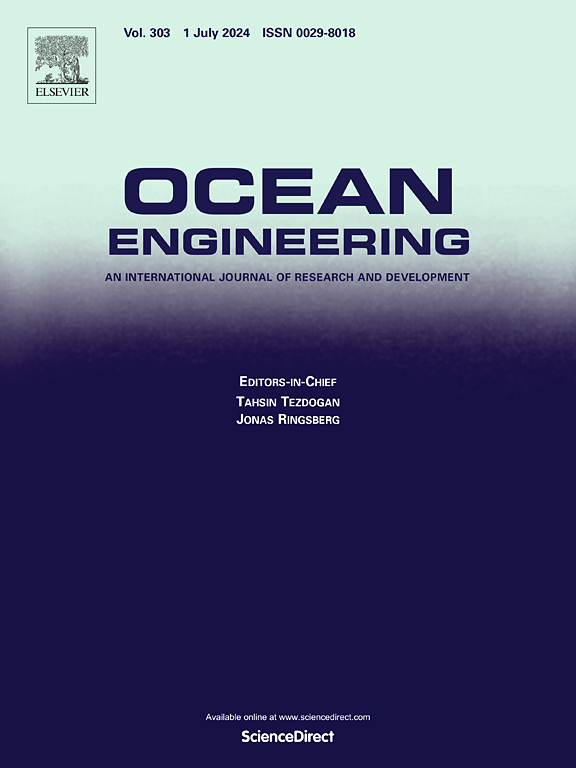Very short-term forecasting of ship multidimensional motion using two coupled models based on deep operator networks
IF 4.6
2区 工程技术
Q1 ENGINEERING, CIVIL
引用次数: 0
Abstract
To achieve simultaneous learning and prediction of multi-degree-of-freedom (DOF) motion, thereby improving the efficiency and accuracy of ship motion forecasting, two multi-DOF coupled motion prediction models: the Single-Branch Coupled Model and the Multi-Branch Coupled Model, are constructed based on the Deep Operator Network (DeepONet) framework in this paper. By segmenting and augmenting the Branch net for multi-dimensional inputs, and dividing the dot product results of the Branch net and Trunk net output data into multi-dimensions for multi-dimensional outputs, both models are respectively used for single and multi-DOF forecasts employing ship model towing experiment data. The prediction results clearly demonstrate the significant advantages of the two models in terms of prediction accuracy and step size. Compared to the DeepONet model, when conducting single-step predictions, under the Mean Squared Error (MSE) standard, the prediction accuracy of the Single-Branch coupled model increased by 97.49%, while that of the Multi-Branch coupled model improved by 112.46%. By employing motion data from multiple DOF to predict roll, pitch, and heave, the approach enables simultaneous forecasts for these three DOF. The Multi-Branch Coupled Model constructed in this paper has not only improved efficiency but also significantly enhanced accuracy, indicating a clear advantage in the very short-term application of ships.
求助全文
约1分钟内获得全文
求助全文
来源期刊

Ocean Engineering
工程技术-工程:大洋
CiteScore
7.30
自引率
34.00%
发文量
2379
审稿时长
8.1 months
期刊介绍:
Ocean Engineering provides a medium for the publication of original research and development work in the field of ocean engineering. Ocean Engineering seeks papers in the following topics.
 求助内容:
求助内容: 应助结果提醒方式:
应助结果提醒方式:


